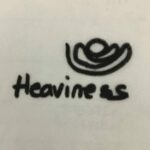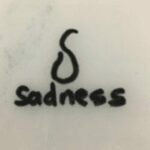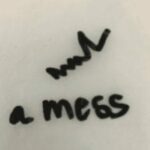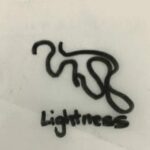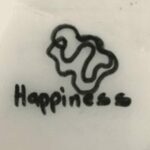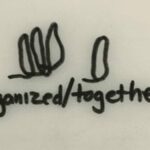Unleash your creative spirit to its fullest potential through Active Meditation/ Doodling
I met Linda Richichi at her solo show at the Cultural Center in Ponte Vedra Beach, FL and was captivated by her paintings and her interest in active meditation doodling and Color and Energy Workshops. Linda is a landscape artist who now resides in Sarasota, FL. Linda has attended Plein Air events since 2003 and has been teaching local and international workshops for over twenty years. She has earned many Best of Show Awards, including one at the International Plein Air Painters (I.P.A,P.) Worldwide Paint Out at Niagara Falls, Ontario, Canada in 2016. In 2012, Richichi was voted the National Best Intuitive Artist from about.com (then a NY Times company) and a NY Times article in 2015 reported on her Soul Vision workshop with great reviews.

by Linda Richichi
12” x 12” Oil

by Linda Richichi
36″ x 36″
Linda said that, “After years of working with my open-minded students who were willing to play along, we discovered together that not only could I access “inside information” but anyone could. I began teaching this ask, doodle-and- decode technique for business coaches at their “mastermind” retreats so they could help their clients to excel in their businesses by moving past internal roadblocks.”
How does this explain why we are called to create art? Linda has found that we all have an innate language and art that works with us using symbolism through our spirit, also called our higher knowing. This part of our self wants to shed all the psychic baggage it can. Since this higher self is not verbal, it communicates through the lines and shape that we draw. Our higher self subtly tries to guide us, but we rarely pay attention to it. Those who doodle on the phone usually draw the same thing over and over and do not have a reason why. I knew this to be true because when I doodle it always big flowers with big circular petals!
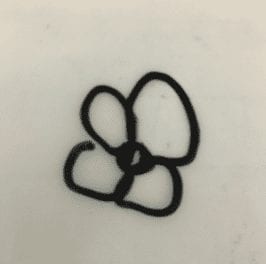
(While on a telephone hold…)
Linda explains, “I take people on a different kind of vision quest by unlocking the left brain’s control over the mind to free the creative spirit within. The elements and principles of art you use in paintings (or even doodles) are communicating to you and your audience in ways that most people are unaware of. Knowing how to decipher the deeper meaning of line and shapes beyond being able to translate them to canvas gives you the ability to upgrade your life. These lines and shapes tell a story. You live by stories you tell yourself daily from past experiences which color your world and shape your life. Life, like art, is a story. I’ve discovered how to play with art in such a way that it becomes a vehicle toward happiness. In my workshops you’ll go deeper to the inner landscape, gain a better understanding how the lines and shapes speak and what they want to reveal to you, what you are currently not seeing. You can experience an “aha” moment doing the exercises which gives you a whole new relationship with your art. Art becomes your mentor guiding you to a brighter way of living if you will let it.”
My workshop experience
Linda holds different types of workshops. The workshop I attended focused on clearing the three centers of the body so we can see from a higher perspective. The three power centers to access are the head (what we think), the body (what we feel) and the belly (what we are being or doing). Through this process, we first doodled after concentrating on what I was currently thinking at the time and it happened to be just after my father passed away. So I was thinking heaviness and worry. I was feeling sadness and as I was grieving, I was not being social, not sleeping well and not really getting anything done. My doodles were:
The next step was to shift our perspective through positive thinking. So we had to contemplate and write down the opposite description for each area. So clearing our minds from the first exercise, we began by thinking of our descriptive word, e.g. “lightness” and then drew without any purposeful mark making but allowing the pen to make abstract shapes. My words became “lightness”, “happiness” and “together.” My doodles were below. We were told that this shifting of perspective and drawing them out helps to keep our power centers strong.
In the workshop we are guided to help explain to ourselves what these doodles mean. My “lightness” doodle appears to show a family and that someone is hugging/protecting us. “Happiness” looks like two butterflies one hovering or surrounding the other meaning that I am being looked after. My third center doodle “together/organized” shows standing tall monoliths, three together with the fourth standing close by but tall. The explanation was that I was strong enough and that I will be ok and we as a family will be together and remain strong.
As demonstrated in my experience the lines, color and shapes we use when we create art are clues to our inner world/thoughts/mind.
Other shapes such as jagged lines with sharp edges and heavy pressure usually express anger or frustration such as the ones I drew when I thought about how I was living my life at that time and I called it a ‘mess’. Lines that form circles are softer, fluid and more loving.
 I realized that when I started painting abstracts last year one of my favorite paintings had a circle in it covering the entire panel and it was in warm colors. So my painting actually was showing the shape and color of love. I didn’t even realize it until I was writing this story and going over all my notes. Once I discovered this, I knew that the paintings needed some words to complete it. I decided to write something meaningful to me, and also depicting this process of connecting and acknowledging a connection between our soul/creative source and creativity. Why I always feel I need to write in french on my paintings is something I will find out some other day!
I realized that when I started painting abstracts last year one of my favorite paintings had a circle in it covering the entire panel and it was in warm colors. So my painting actually was showing the shape and color of love. I didn’t even realize it until I was writing this story and going over all my notes. Once I discovered this, I knew that the paintings needed some words to complete it. I decided to write something meaningful to me, and also depicting this process of connecting and acknowledging a connection between our soul/creative source and creativity. Why I always feel I need to write in french on my paintings is something I will find out some other day!These exercises I did in Linda’s workshop were mind expanding and very enlightening.
Linda’s Color & Energy Workshops are held in Sarasota, FL and other destinations are being planned and can be found on www.lindarichichi.com. The Color and Energy workshops are geared toward this intuitive language as well as an emphasis on painting.
